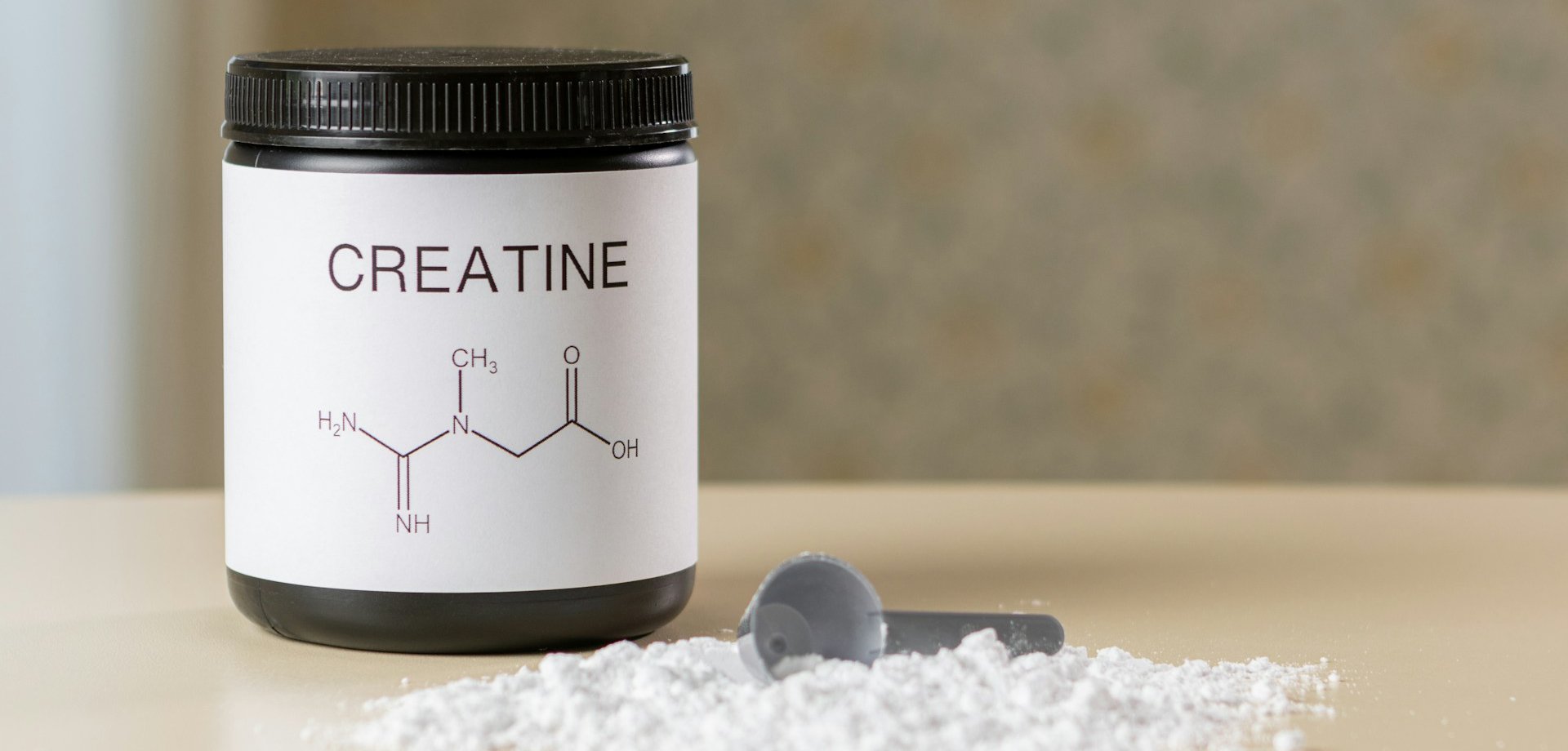Caffeine and early follicular phase: a beneficial combination?
Author:
Julio Valero
Published on:
12/26/2024

Caffeine increases strength and power performance in women who train with resistance during the early follicular phase.
Scientific literature has highlighted the positive effects of caffeine on overall performance. However, it is crucial to recognize the need for more studies focusing specifically on women. A recent research paper contributes to this goal, exploring how caffeine affects different blood parameters and female physical performance, including strength and power.
Overview
What data was collected? Different aspects of physical performance were measured and blood samples were analysed in two experiments where some participants took caffeine (4 mg/kg) and others a placebo.
Research showed that an amount of 4 mg/kg of caffeine had a positive ergogenic effect on trained women, significantly improving their performance in strength and power exercises.
Caffeine gives women a boost! Recent studies confirm that caffeine can increase strength and power in women who consume it regularly. However, it is important to remember that not everyone is the same. Start with low doses and increase gradually to avoid side effects such as jitters. Listen to your body!
What's the problem?
Caffeine, the most widely consumed legal drug worldwide, stimulates the central nervous system, providing an essential energy boost for many. Its popularity extends beyond the everyday, extending to sports, where it improves performance in strength, endurance and power. However, despite its benefits, research on caffeine in women remains limited.

Hormonal changes associated with the menstrual cycle, especially estrogen and progesterone levels, can influence how the body processes substances such as caffeine. During the late follicular phase, when estrogen peaks, caffeine is metabolized more rapidly, which could modify its effects. This hormonal variability could explain some of the difficulties in studying the effects of certain substances in women. Hormonal fluctuations and menstrual cycle phases can significantly influence women's strength and power. Ignoring these physiological changes leads to inconsistencies in the results of performance studies. Although caffeine appears to improve performance in general, its specific impact on strength and power during the menstrual cycle is still unclear.
Purpose
In this study, a protocol was designed to determine the acute effects of a 4 mg/kg dose of caffeine on multiple performance indicators in female athletes, specifically during the early follicular phase. Secondary measures such as subjective perception of effort, presence of pain, and plasma caffeine levels were included.
Variable | Mean ± SD | Range |
Age (y) | 29.8 ± 5.5 | - |
Height (cm) | 165.8 ± 4.8 | - |
Body weight (kg) | 63.8 ± 5.5 | - |
Fat-fee mass (kg) | 52.3 ± 5.2 | 44.4-63.2 |
Fat mass (kg) | 11.3 ± 4.0 | 4.9-21.2 |
Body fat (%) | 17.7 ± 5.8 | 8.1-32.3 |
Hormone contraceptive use (n - %) | 10 | 66.7 |
RT experience (y) | 7 ± 5 | 2-16 |
RT frequency (sessions/wk) | 4 ± 1 | 2-5 |
Squat 1RM (kg) | 97 ± 13 | 75-115 |
Squat 1RM (kg/bw) | 1.5 ± 0.2 | 1.2-1.8 |
Bench press 1RM (kg) | 66 ± 10 | 50-82 |
Bench press 1RM (kg/bw) | 1.0 ± 0.2 | 0.8-1.3 |
Energy (kcal) | 2208 ± 509 | 1473-3497 |
Protein (g/d) | 143 ± 37 | 67-210 |
Carbohydrate (g/d) | 209 ± 54 | 130-301 |
Fat (g/d) | 84 ± 39 | 40-182 |
Habitual caffeine intake(mg/d) | 341 ± 184 | 54-692 |
Range: min-max
Abbreviations: 1RM, one-repetition maximum ; RT, resistance training.
Measured with BIA via. InBody 720
Based on maximal 1RM across two familiarization sessions
Mean habitual intakes from a 24-h food diary priro to each test day
Habitual caffeine intake questionnaire
Hypothesis
The researchers hypothesized that caffeine supplementation would lead to significant increases in strength, muscle activation, vertical jump height, and muscular endurance, compared to a control group receiving a placebo.
What did they test and how?
The participants
The study was initiated with 25 resistance-trained women, but due to logistical issues (n=9) and consumption of an external source of caffeine (n=1), only 15 completed the study. Despite the loss of participants, the women who completed the study had high levels of strength and an average caffeine intake of 341 mg/day. Baseline characteristics of the participants are detailed in Table 1.
Study procedures
A randomized, double-blind, placebo-controlled, crossover design was employed. Participants, unaware of the assigned treatment, completed both trials in random order with a 72-hour washout period between them. Four sessions were conducted per participant: two familiarization sessions and two treatment sessions. In case of high variability in the initial sessions, an additional familiarization session was added. Using a caffeine frequency questionnaire, participants reported their weekly consumption of caffeinated products. The data obtained allowed participants to be categorized into three groups according to their intake. In addition, a 24-hour food diary was employed to standardize the diet before each trial and to minimize the effect of other variables.
The experimental protocol, detailed in Figure 1, included a 210-min standardized test. Blood samples were taken before, during, and after ingestion of the treatment (caffeinated or decaffeinated coffee) administered 60 min before each assessment. Participants consumed a standardized meal beforehand and all treatments were presented identically (color, flavor, etc.).
Testing trial overview. 1RM, one-repetition maximum; BP, bench press; SQ, squat; CMJ, countermovement jump; MVC, maximal voluntary contraction; RTF, repetitions to failure.
Countermovement Jump (CMJ): This test assesses the ability to generate force in an explosive movement. The individual starts in a squat position, performs a vertical jump, and lands on a force plate. This plate measures variables such as jump height, peak power (the rate at which force is generated), and peak force (the greatest force applied). Multiple sets are set up to ensure the best individual performance is obtained.
Maximal voluntary isometric contractions (MVC): In order to assess the strength and force development capacity of the right quadriceps, five maximal voluntary isometric contractions (MVC) were performed on a specialized machine. Variables such as maximum torque, muscle activation, rate of maximum force development (RFDmax), and torque at 100 ms were analyzed.
1 repetition maximum (1RM): Maximum 1RM strength was assessed in the squat and bench press. For the squat, a Smith machine was used. The load was started at 95% of the estimated 1RM and progressively increased to failure. The 1RM was defined as the maximum load lifted in a single repetition.
Muscular endurance, perceived exertion and soreness: repetitions to failure (RTF) protocol was performed using 60% of 1RM as the initial load. A metronome was used to standardise the tempo of execution. Failure was demonstrated when participants could not complete a repetition within two metronome beats or did not initiate the next one. The number of repetitions completed was recorded and then perceived exertion (RPE, Borg scale) and soreness (numeric scale from 0 to 10) were assessed. RPE was assessed after the 10th repetition, while soreness was assessed immediately after completing all repetitions.
Assessment of caffeine metabolism: Concentrations of caffeine and its metabolites were determined in a blood plasma sample, with the aim of evaluating the body's ability to metabolize this substance and obtaining information on its recent consumption.
What was found?
Countermovement jump with maximum voluntary isometric contractions
Caffeine supplementation produced a significant increase in jump height (2.3 cm) and peak power (105 W) compared to placebo. While no differences in peak strength were observed, caffeine significantly increased maximal voluntary contraction (MVC) peak torque by 11 Nm. These results suggest that caffeine may enhance explosive performance without affecting maximal strength.
Performance Outcomes | Placebo | Caffeine | Mean of 𝚫 ± SD | 95% CI | P-value | Effect Size |
CMJ jump height (cm) | 32 ± 4.7 | 34.3 ± 4.5 | 2.3 ± 1.1 | 1.7, 2.9 | <.001 | 0.44 (small) |
CMJ peak power (W) | 2840 ± 430 | 2946 ± 430 | 105 ± 63 | 71, 140 | <.0001 | 0.21 (trivial) |
MVC peak torque (Nm) | 173 ± 29 | 181 ± 31 | 11* | 2, 18 | .02 | 0.23 (trivial) |
Data are presented as mean ± SD or median*. Abbreviations: CI, 95% confidence interval; CMJ, countermovement jump; 𝚫, difference between trials; MVC, maximum voluntary contractions.
Squat and Bench Press Performance
Caffeine significantly increased 1RM in the squat (+4.1 kg) and bench press (+2.2 kg). In addition, caffeine significantly increased RTF in the squat at 5.8 repetitions (effect size = 0.27) and RTF in the bench press at 1.8 repetitions (effect size = 0.27) compared to placebo. No significant differences were found in within-set RPE or perceived pain at failure.
Squat and bench press 1RM comparison between placebo and caffeine treatments
Evaluation of caffeine metabolism
In both the caffeine and placebo groups, theobromine was the only substance that increased in blood at 60 and 270 minutes after the study. There were no differences between the groups with respect to theobromine. Caffeine peaked in blood at 60 minutes (3.6 μg/mL) and then decreased slightly. On the other hand, paraxanthine and total metabolites increased significantly throughout the study. Detailed blood concentrations are presented in Table 3.
Caffeine | Placebo | |||||
Analyte | Baseline | 60 min | 270 min | Baseline | 60 min | 270 min |
Caffeine (𝜇g:mL-1) | 0.0 ± 0.1 | 3.6 ± 0.8a,c | 3.1 ± 0.9a,b,c | 0.1 ± 0.2 | 0.1 ± 0.1 | 0.0 ± 0.0 |
Paraxanthine (𝜇g:mL-1) | 0.1 ± 0.1 | 0.8 ± 0.4a,c | 1.7 ± 0.8a,b,c | 0.1 ± 0.2 | 0.1 ± 0.1 | 0.2 ± 0.2 |
Theobromine (𝜇g:mL-1) | 0.0 ± 0.0 | 0.5 ± 0.1a | 0.7 ± 0.1a,b | 0.2 ± 0.3c | 0.6 ± 0.4a | 0.8 ± 0.4a |
TC (𝜇g:mL-1) | 0.2 ± 0.3 | 4.9 ± 0.9a,c | 5.6 ± 1.0a,b,c | 0.4 ± 0.6c | 0.8 ± 0.6 | 1.0 ± 0.6a |
Values are presented as mean ± SD. Abbreviation: TC, total concentration of metabolites. a, different from within condition baseline (P < .05). b, different from within condition 60 min (P < .05). c, different from between condition corresponding time-point (P < .05).
Habitual caffeine consumption
Participants consumed an average of 341 mg of caffeine per day. This intake was significantly associated with improved performance in muscular endurance exercises such as the squat (r = .52, p = .045) and bench press (r = .58, p = .024).
What do these results tell us?
Acute ingestion of 4 mg/kg of caffeine in trained women significantly improved strength, power, and performance in compound exercises such as the squat and bench press. Despite the high habitual caffeine intake in the group, additional improvements were seen in jump height and isometric torque. These results support the use of caffeine as an ergogenic in female athletes. Although daily coffee drinking does not 'cancel out' the benefits of a pre-workout caffeine shot, our results suggest that regular consumption may make these effects a little less intense. But rest assured, your morning cup of coffee is not ruining your workout.
The results show a slight average increase in squat and bench press maximal strength (1RM) following caffeine consumption, although with considerable variability between individuals. It is interesting to note that, despite the small average difference, almost all participants experienced an improvement in their 1RM. The results also suggest that lower doses of caffeine might be equally as effective, or even more so, than higher doses, but further studies are needed to confirm this. In this study, three participants reported feeling shaky, whereas in the previous research, three subjects showed heightened emotional responses. Importantly, none of the participants in either study were regular caffeine consumers. These preliminary findings suggest that regular consumers might develop tolerance to the acute physiological and psychological effects of caffeine.

The results revealed a 4.5% increase in squat 1RM in the caffeine group, evidencing a greater increase in lower body strength compared to upper body strength. These findings contrast with a previous meta-analysis that found no significant effects on lower body strength, but did find significant effects on upper body strength. It is worth noting the predominance of male participants and the limited research on women on this topic in the existing literature. The scientific community has not yet reached a consensus on how caffeine affects the athletic performance of men and women. Existing studies, although promising, are insufficient to establish definitive conclusions, especially in women. More in-depth research is required that considers the physiological particularities of each sex, such as the phases of the menstrual cycle. As mentioned, more research is required on the ergogenic effects of caffeine in women, considering hormonal variations throughout the menstrual cycle. Likewise, it is necessary to delve deeper into gender differences and the specific muscle response (upper vs. lower) to caffeine consumption.
How can these findings be applied?
Caffeine, consumed in excess, can cause health problems. It is important to know your tolerance and start with low doses. Avoid powders and prioritize pills. What is the ideal amount of caffeine before training and how long before should I take it?
In the study and according to Goldstein et al. (2010), doses higher than 6 mg/kg of caffeine did not seem to offer any additional benefits and could increase side effects. Considering that a cup of coffee contains about 100 mg, participants in this study, with an average consumption of 341 mg daily, tolerated doses up to 4 mg/kg well. We recommend starting with lower doses and gradually increasing them, especially if you are not a regular caffeine consumer.
Most studies on caffeine administer the dose 60 minutes before exercise to ensure peak blood levels. Although caffeine is fast acting (~20 minutes), it is recommended to consume it 45-60 minutes before for optimal absorption. Despite hormonal fluctuations during the menstrual cycle, studies show no significant differences in response to caffeine between different phases. Therefore, it is not necessary to adjust caffeine intake based on the menstrual cycle.
References
Norum, M, Risvang, LC, Bjørnsen, T, et al. Caffeine increases strength and power performance in resistance‐trained females during early follicular phase. Scand J Med Sci Sports. 2020; 00: 1– 14.
Grgic, J., Grgic, I., Pickering, C., Schoenfeld, B. J., Bishop, D. J., & Pedisic, Z. (2020). Wake up and smell the coffee: caffeine supplementation and exercise performance-an umbrella review of 21 published meta-analyses. British journal of sports medicine, 54(11), 681–688.
Salinero, J. J., Lara, B., Jiménez-Ormeño, E., Romero-Moraleda, B., Giráldez-Costas, V., Baltazar-Martins, G., & Del Coso, J. (2019). More Research Is Necessary to Establish the Ergogenic Effect of Caffeine in Female Athletes. Nutrients, 11(7), 1600.
Elliott, K. J., Cable, N. T., Reilly, T., & Diver, M. J. (2003). Effect of menstrual cycle phase on the concentration of bioavailable 17-β oestradiol and testosterone and muscle strength. Clinical science, 105(6), 663-669.
Kuhl, H., Gahn, G., Romberg, G., März, W., & Taubert, H. D. (1985). A randomized cross-over comparison of two low-dose oral contraceptives upon hormonal and metabolic parameters: I. Effects upon sexual hormone levels. Contraception, 31(6), 583-593.
Lane, J. D., Steege, J. F., Rupp, S. L., & Kuhn, C. M. (1992). Menstrual cycle effects on caffeine elimination in the human female. European journal of clinical pharmacology, 43(5), 543-546.
Pallavi, L. C., D Souza, U. J., & Shivaprakash, G. (2017). Assessment of Musculoskeletal Strength and Levels of Fatigue during Different Phases of Menstrual Cycle in Young Adults. Journal of clinical and diagnostic research : JCDR, 11(2), CC11–CC13.
Grgic, J., Trexler, E. T., Lazinica, B., & Pedisic, Z. (2018). Effects of caffeine intake on muscle strength and power: a systematic review and meta-analysis. Journal of the International Society of Sports Nutrition, 15, 11.
Goldstein, E., Jacobs, P. L., Whitehurst, M., Penhollow, T., & Antonio, J. (2010). Caffeine enhances upper body strength in resistance-trained women. Journal of the International Society of Sports Nutrition, 7, 18.
Trevino, M. A., Coburn, J. W., Brown, L. E., Judelson, D. A., & Malek, M. H. (2015). Acute effects of caffeine on strength and muscle activation of the elbow flexors. Journal of strength and conditioning research, 29(2), 513–520.
Fett, C. A., Aquino, N. M., Schantz Junior, J., Brandão, C. F., de Araújo Cavalcanti, J. D., & Fett, W. C. (2018). Performance of muscle strength and fatigue tolerance in young trained women supplemented with caffeine. The Journal of sports medicine and physical fitness, 58(3), 249–255.
Pickering, C., & Grgic, J. (2019). Caffeine and Exercise: What Next?. Sports medicine (Auckland, N.Z.), 49(7), 1007–1030.
Chen, H. Y., Wang, H. S., Tung, K., & Chao, H. H. (2015). Effects of Gender Difference and Caffeine Supplementation on Anaerobic Muscle Performance. International journal of sports medicine, 36(12), 974–978.
Sabblah, S., Dixon, D., & Bottoms, L. (2015). Sex differences on the acute effects of caffeine on maximal strength and muscular endurance. Comparative Exercise Physiology, 11(2), 89-94.
Pasman, W. J., van Baak, M. A., Jeukendrup, A. E., & de Haan, A. (1995). The effect of different dosages of caffeine on endurance performance time. International journal of sports medicine, 16(4), 225–230.
Ahrens, JN, Crixell, SH, Lloyd, LK y Walker, JL (2007). Efectos fisiológicos de la cafeína en mujeres durante la marcha en cinta. Revista de investigación de fuerza y acondicionamiento, 21(1), 164–168.
Del Coso, J., Muñoz, G., y Muñoz-Guerra, J. (2011). Prevalencia del consumo de cafeína en deportistas de élite tras su eliminación de la lista de sustancias prohibidas de la Agencia Mundial Antidopaje. Fisiología aplicada, nutrición y metabolismo = Physiologie appliquee, nutrition et metabolice, 36(4), 555–561.
Lara, B., Gutiérrez-Hellín, J., García-Bataller, A., Rodríguez-Fernández, P., Romero-Moraleda, B., & Del Coso, J. (2020). Efectos ergogénicos de la cafeína sobre la potencia máxima del ciclismo aeróbico durante el ciclo menstrual. Revista europea de nutrición, 59(6), 2525–2534.
Comparte en redes sociales
Recent posts

A bad night's sleep: a reason to stay up even longer?

Creatine Effectiveness: What Does Science Say About Its Benefits?

Does meal timing help you lose fat?

Is your triceps press building muscle or holding you back?

Nutrition tailored to you: based on your genetic profile.

Carbohydrates: the key to an explosive workout.